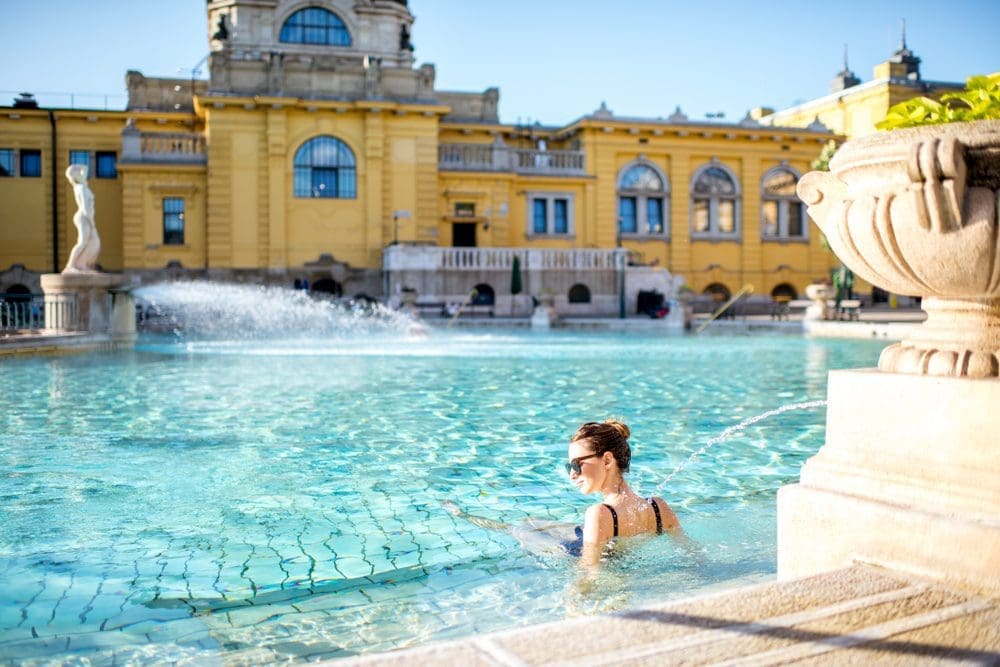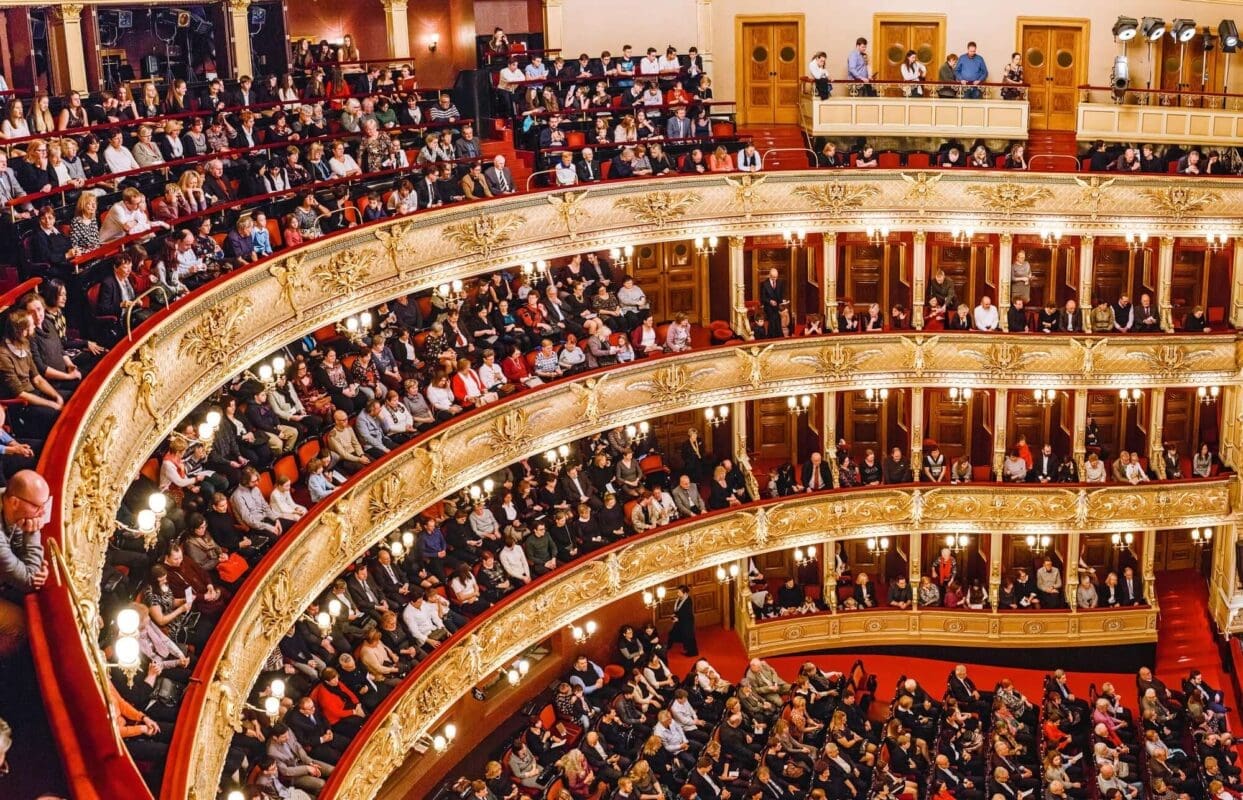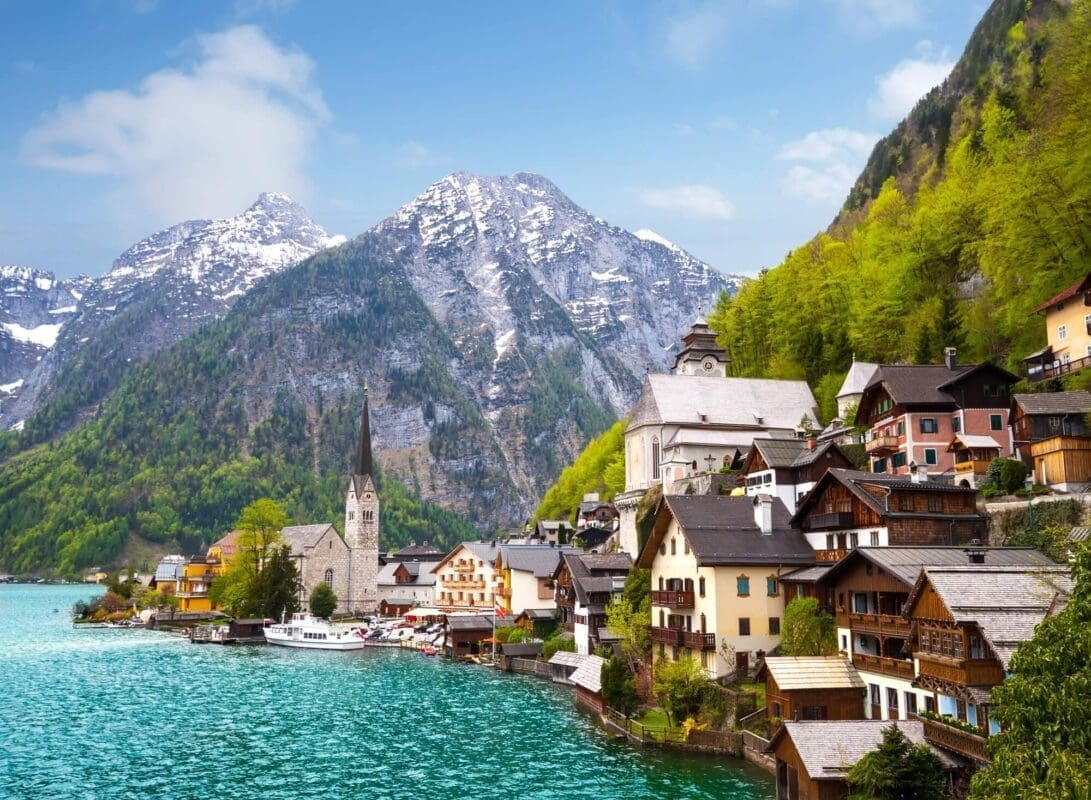Czechia is well known among travelers for its beautiful architecture and sheer quantity of castles scattered across the region. The capital city of the Czech Republic, Prague, or Praha, as known in Czech, is located in central Europe, making it a great vacation destination. With its mouthwatering dishes and abundance of museums, this great city has a lot to do and see. Even a week might not be enough to fully discover Prague, but with a few insider Prague travel tips, you can make the most of your trip. From public transportation secrets to finding the best local spots, here’s your ultimate guide to traveling like a local in the Czech capital.
Explore The Heart of Europe on our 5-day Prague trip
1. The best area to stay in Prague
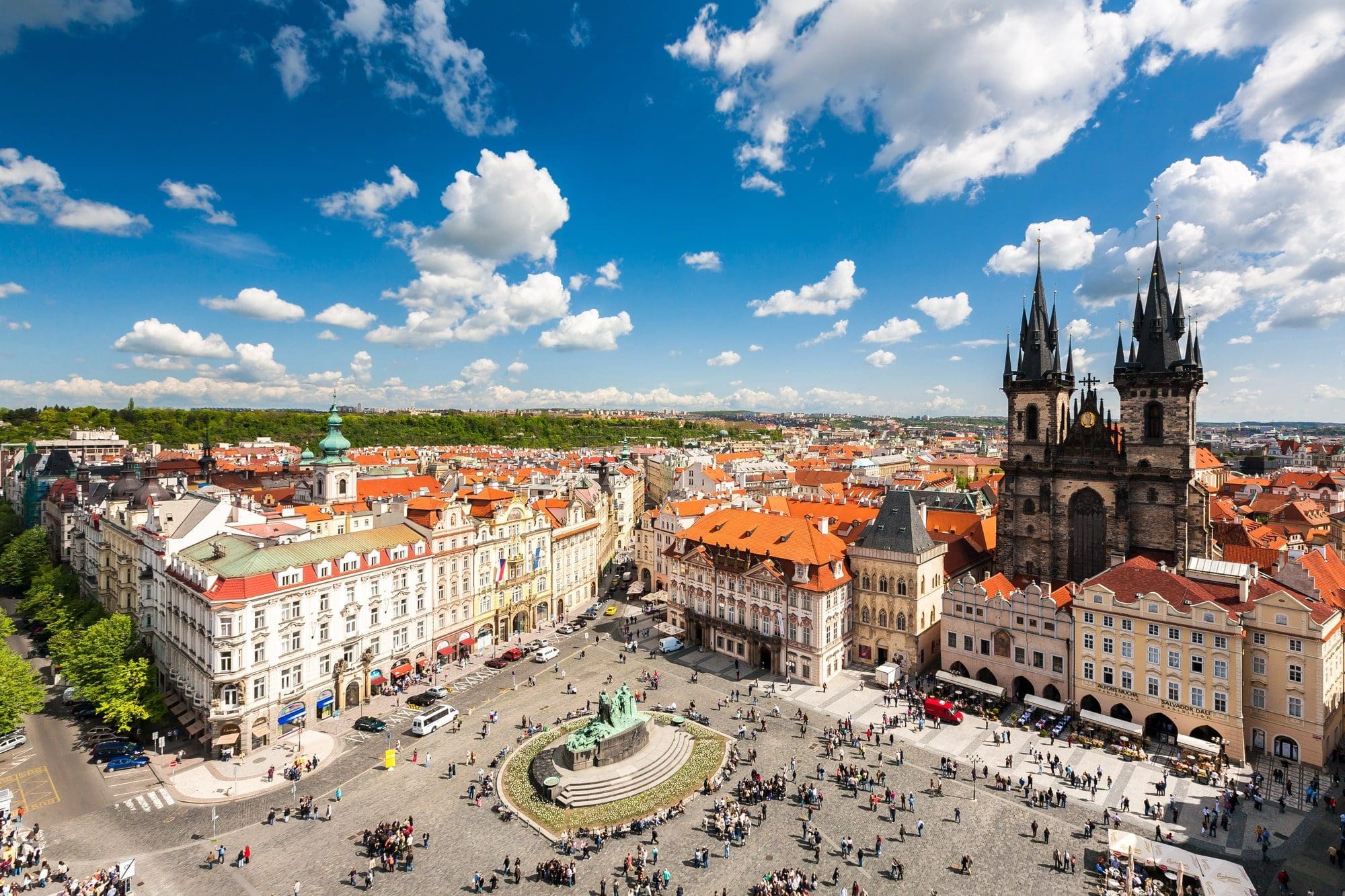
Choosing where to stay in Prague is essential to enjoying the city entirely. The most popular districts for tourists are Old Town (Stare Mesto) and Mala Strana, which are rich in history and attractions from the 10th century. However, if you want a quieter and more local experience, you can consider staying in Prague’s Vinohrady or Zizkov areas. Both areas offer charming atmospheres with local cafes, parks, and excellent public transport connections, allowing you to explore Prague as a local.
If you are a first-time visitor to Prague, then Old Town offers the best proximity to famous landmarks like Charles Bridge and the Astronomical Clock, which are within walking distance. But for a more relaxed stay, Karlin is an up-and-coming area known for its relaxed vibes, picturesque streets, and local dining scene, which is just a short tram ride away from the city center. Another nice option is Hradcany, which is the neighborhood located just behind the castle. It has all the atmosphere of Old Town but without the crowds.
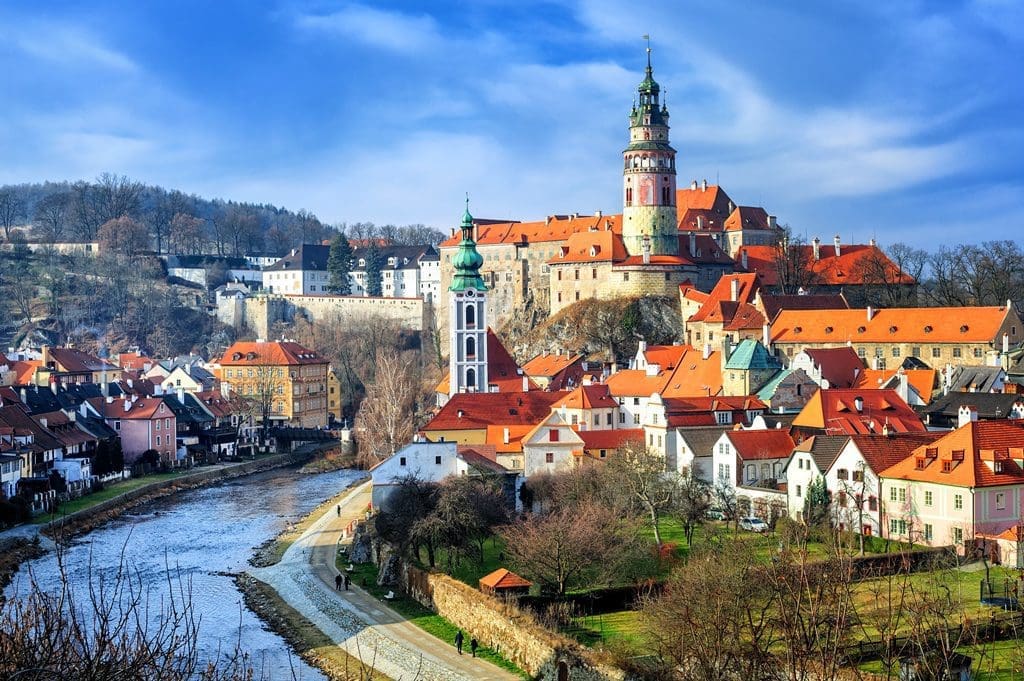
Want to build your own trip to Czech Republic instead?
Instantly create your own customized trip with our easy to use trip builder
2. Public transportation is your Escape

Prague’s public transportation is incredibly efficient and budget-friendly, letting you explore the city in the best way. Forget about expensive taxis, as the city’s extensive network of trams, buses, and metro lines can get you anywhere you need to go. A must-have for navigating public transport in Prague is the PID App, also available in English. This app lets you check real-time tram and metro schedules, buy tickets, and plan routes. If you are new to the city, this app is a lifesaver. Here’s one essential tip: if you are traveling on Prague public transport, your ticket uses a time-based ticket system. For instance, one 90-minute ticket can get you across the city using multiple forms of transportation, meaning you can switch from the tram to the metro, for instance, without needing a new ticket.
If you purchase a paper ticket from one of the automated machines at the metro stations, be sure to only stamp the ticket once, and also make sure to stamp your ticket when first entering metro stations. If you miss the ticket stamping machines, the ticket inspectors will have no sympathy for you. Complications like this are why we suggest downloading the PID App if you plan to use public transport more than a couple of times.
Bonus tip: For a more scenic journey, take tram 22, which passes by several iconic landmarks, including Prague Castle and the National Theater.
3. Prague is not costly:
Contrary to what many might think, Prague is a surprisingly affordable European destination. Dining, Transportation, and accommodation can be budget-friendly if you know which Prague travel guide to look for. Do you know some of the best things to do in Prague are free? Yes, you heard it right. For example, you can visit the stunning Vysehrad Fortress, where you can walk along its centuries-old ramparts and take in breathtaking city views, all without spending a penny. If you want more ideas for free activities, check out our blog on free things to do in Prague.
Don’t forget to explore the Charles Bridge at sunrise or sunset for a peaceful, crowd-free experience. Moreover, you can wander through Letna Park, which provides some of the best views of the Vltava River and the city’s famous bridges.
4. Don’t forget to try the Czech food.
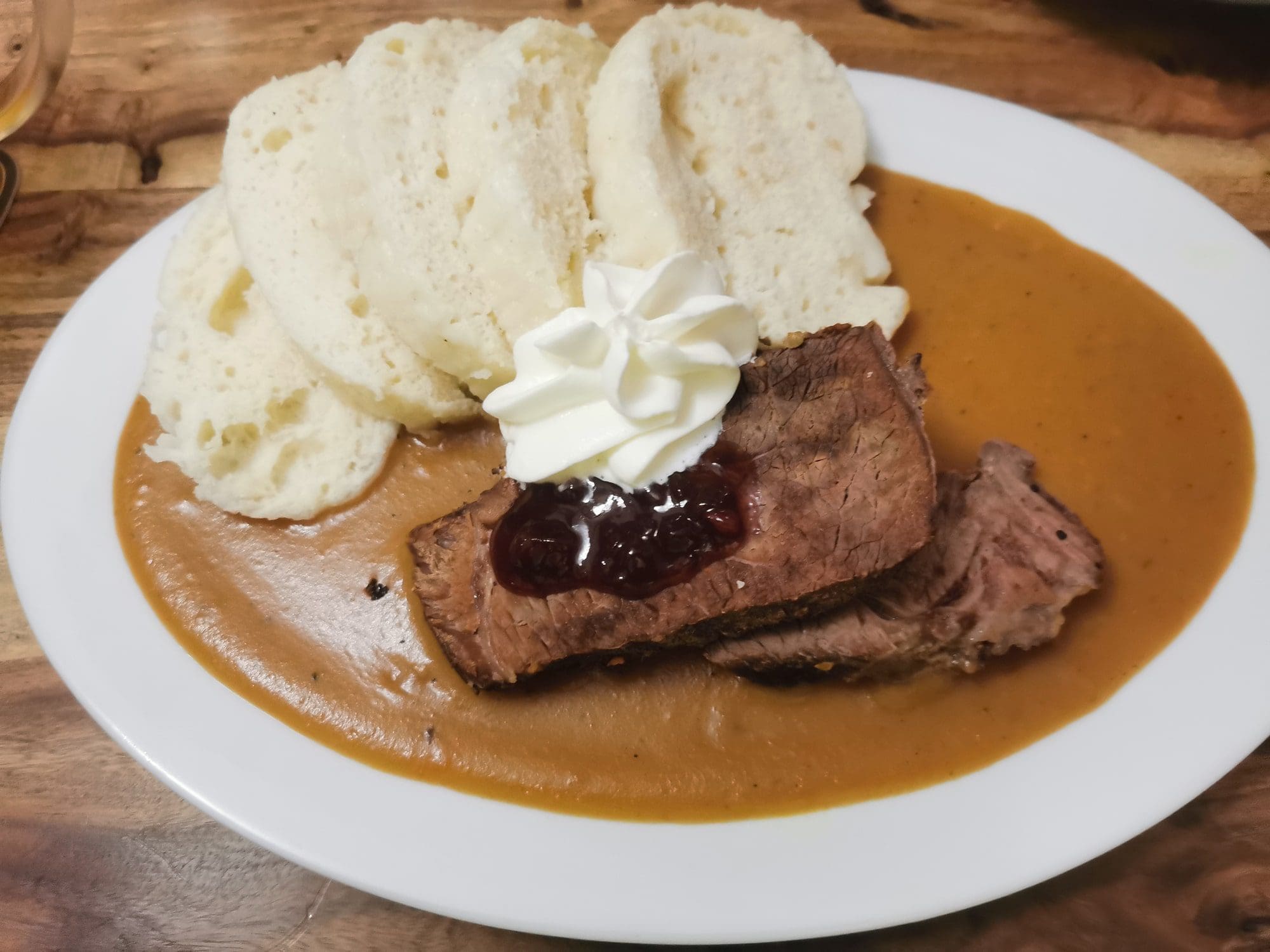
In Prague, indulging in Czech cuisine is a must for a memorable experience. While Trdelnik (the famous chimney pastry) has become a favorite tourist dish, it is not a traditional Czech dish. For authentic flavors, try Svickova, a hearty dish of marinated beef in a creamy vegetable sauce served with bread dumplings. Another Czech classic is Vepro knedlo zelo which is a roast pork with dumplings and sauerkraut that you can find in most of the local pubs. For an authentic local experience, head to one of the traditional restaurants in Zizkov or Vinohrady, where you will find authentic Czech food at more reasonable prices than in the tourist center.
Here’s another inside Prague Travel tip: wash it all down with a Pilsner Urquell (the original Pilsner beer) or a dark Czech lager, and you can enjoy an authentic taste of Prague.
5. Escape the crowd: Visit Prague’s Hidden Gems
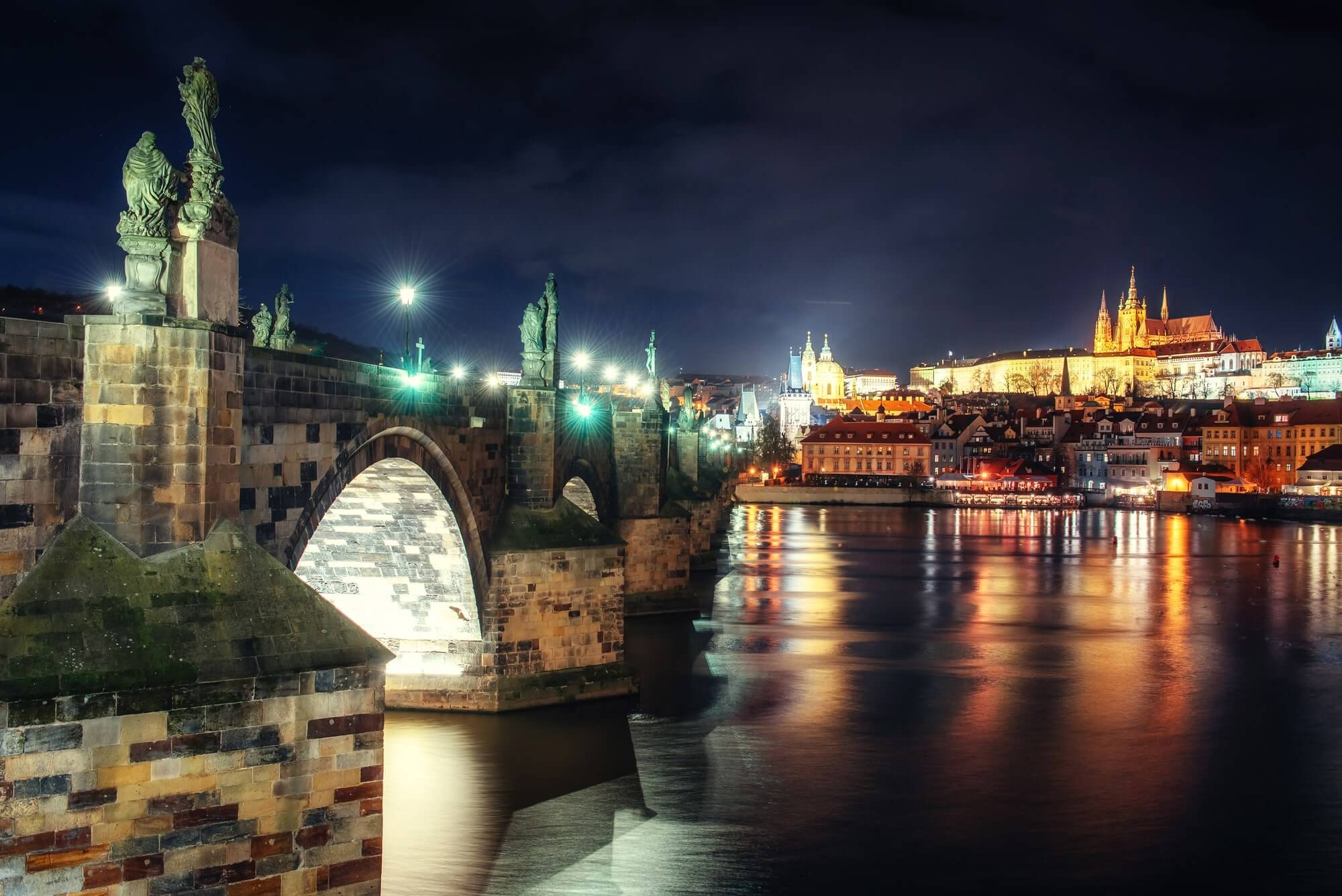
Prague can get crowded, especially in the summer, but there are plenty of ways to enjoy the city while avoiding tourist risks. One of the best Prague travel tips is to visit famous attractions at off-peak times. For example, the Charles Bridge is a much quieter place in the early morning or late at night, giving you a serene experience of this iconic landmark. For a more offbeat adventure, head to the charming Novy Svet in Hradcany, a hidden neighborhood near Prague Castle. Novy Svet dates back to the medieval period, and navigating its narrow cobblestone streets feels like stepping back in time as you pass by picturesque, centuries-old homes. Moreover, you can also opt for walking tours in Prague, including this attraction.
Other quieter districts include Vinohrady, a local favorite because of its beautiful parks and trendy cafes. Here, you can peacefully enjoy the wine cellars and gardens while sipping local wines from one of the royal vineyards. Another place to consider is Zizkov, which is known for its vibrant nightlife. There are over 300 pubs packed into a relatively small area and cultural spots include the former train track, Vitkov Hill, and the Television Tower, which offers panoramic views of Prague and the surrounding countryside. Karlin is another gem in Prague that offers a mix of modern cafes and historic architecture that you can explore away from the usual tourist crowds.
6. Attend a Performance in a Beautiful Concert Hall
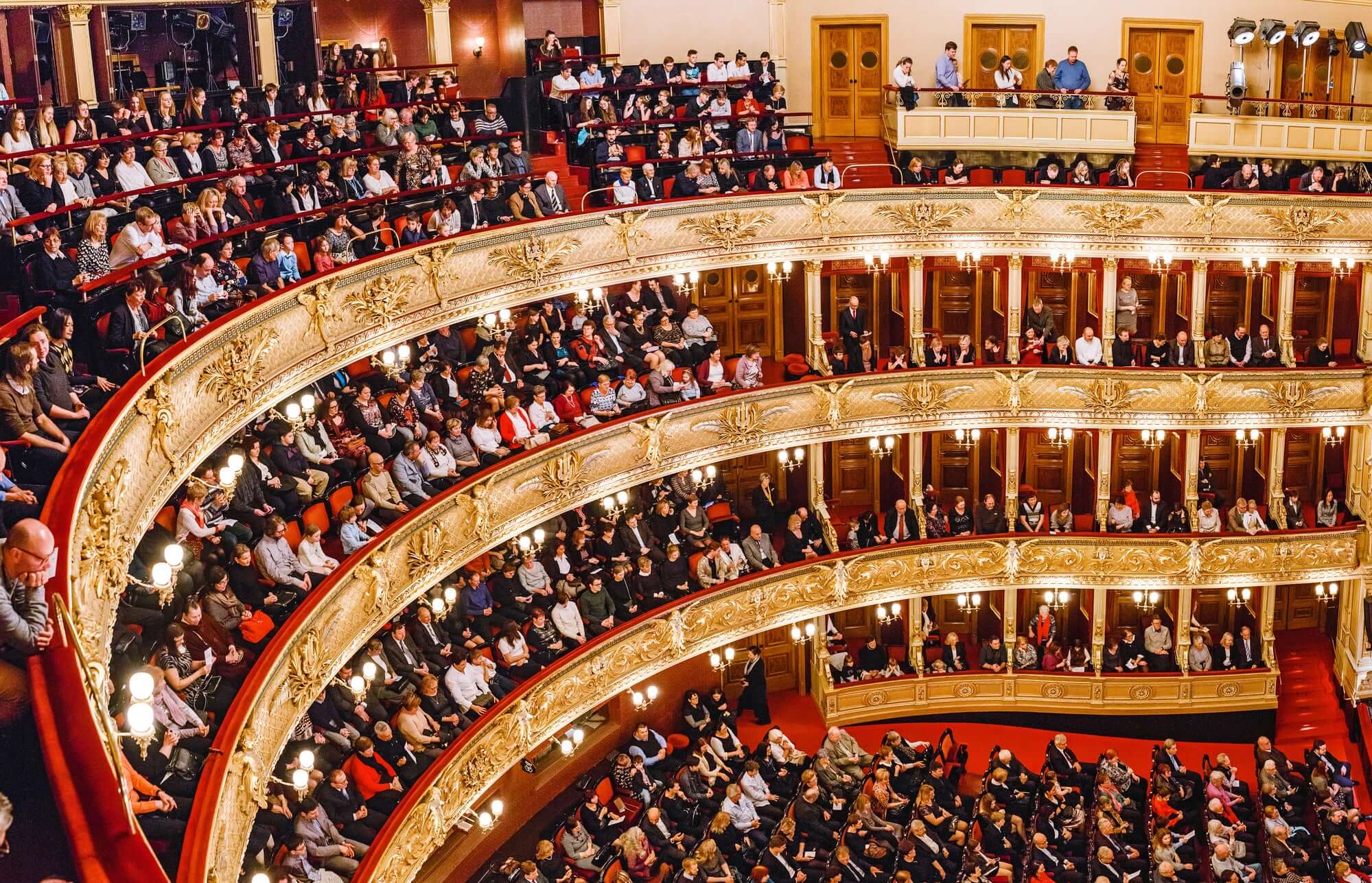
Another great option for escaping the tourist crowds is to enjoy a concert, ballet, or opera in one of Prague’s amazing concert halls. The most beautiful venues include the National Theater, Estates Theater, State Opera, and Municipal House. While you will run into many people on the street selling concerts intended for tourists, going to a performance in one of the above venues provides a totally different experience due to the setting and the quality of the performances. Just be sure not to ruin the ambiance for the locals by showing up in jeans and t-shirts (although suits, ties, and ballroom gowns are not necessary).
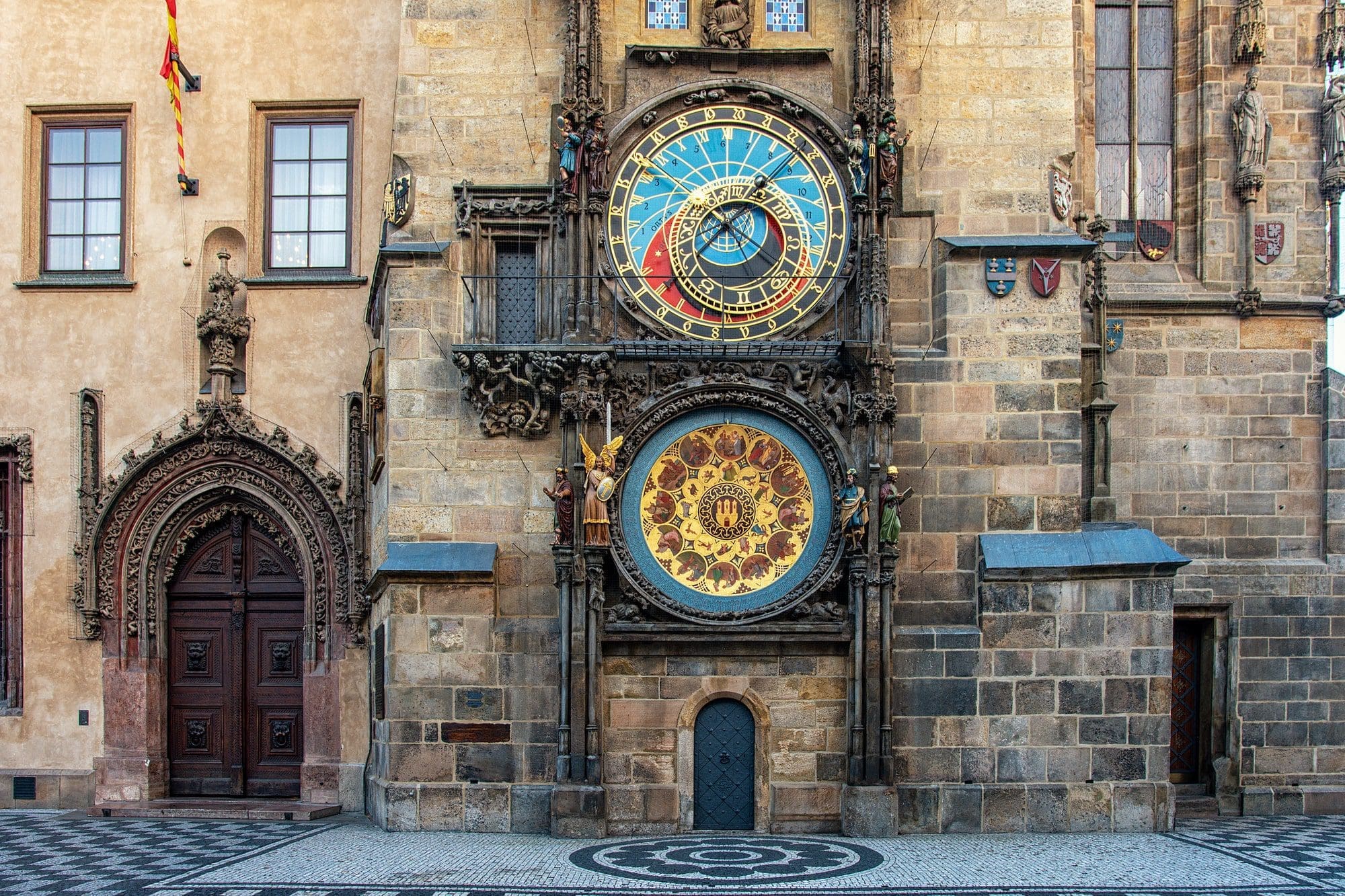
Want to build your own trip to Prague instead?
Instantly create your own customized trip with our easy to use trip builder
7. Don’t miss Prague’s rich history.

Prague travel packages typically focus on its architecture and can’t-miss attractions, but not without good reason. One such attraction is Prague Castle, one of the world’s largest castle complexes. Here, you can wander through its courtyards, admire the stunning St. Vitus Cathedral, and take in the sweeping views of the city from near the castle entrance. Another must-visit is an Old Town Square, home to the Astronomical Clock and the Tyn Church. The Jewish Quarter also offers a glimpse into Prague’s Jewish history with its synagogues and the moving old Jewish Cemetery. For something Instagram-trendy, check out the Frank Gehry-designed Dancing House, a modern architectural wonder. For something off-the-beaten-path, explore the artistic and cultural vibe of the DOX Center for Contemporary Art, or take a walk through the orchards of Petrin Park and enjoy some of the most perfect views the city has to offer.
Also Read: 10 Reasons Why You Must Visit Prague
8. To visit the 600-year-old clock

The Prague Astronomical Clock is one of the city’s most famous landmarks, which you should see on your trip to the Czech capital. Installed in 1410, it’s the oldest functioning astronomical clock in the world. The clock puts on a little show every hour, with figures of the Apostles appearing as the clock chimes. To get the best views, arrive about 10 minutes before the hour. If you want to learn more about the clock’s history, consider taking a walking tour of the Old Town that dives into the history and hidden stories of the iconic landmark.
9. Prague beer capital of the world

Beer lovers will be in heaven, as Prague is known as the world’s beer capital. Czechs take their beer seriously, and you will find that the local brews are delicious and incredibly affordable. Beer is often cheaper than water in Prague pubs! You can’t go wrong with a pint of Pilsner Urquell, the country’s most famous beer, or a Staropramen brewed in Prague. For a more unique experience, visit a local beer garden such as the one in Letna Park, where you can down a cool brew while enjoying the panoramic views of the city. If you’re really serious about your beer, you can also take a beer tour of Prague to explore different breweries and learn about the city’s beer culture.
Frequently Asked Questions About Traveling to Prague
Q1. How many days in Prague is enough?
Answer: 3 to 4 days is usually enough to explore Prague’s main attractions and soak in its unique atmosphere, including the walking tours and day excursions. However, if you want to dive deeper into a local experience, try to stay for at least a week.
Also Read: 10 Most Amazing Day Trips from Prague
Q2: Is Prague an expensive city to visit?
Answer: If you plan your trip to Prague, you should know that Prague is relatively cheaper than many of Europe’s major cities. While it’s gotten more expensive in recent years, you can easily find budget-friendly stay options and exceptional public transport. There are many free things to do in Prague, such as enjoying the views from Charles Bridge, wandering the Jewish Quarter, self-guided walking tours in Prague, and many more.
Q3: What is the best month to visit Prague?
Answer: The best months to visit Prague are April to May and September to October, as the temperatures are comfortable and pleasant for exploring the city. To avoid the crowds and get better hotel rates, try April or late October, when the city’s natural beauty is at its peak and the weather is still usually decent. You can enjoy the best of both worlds during this time.
Q4. Where to stay in Prague for first-timers?
Answer: If you are traveling to Prague for the first time, you should book your stay in Old Town, New Town, or Mala Strana for easy access to the city’s famous landmarks and monuments. In these areas, you can also find local cafes, restaurants, and an excellent connection to public transport to make your trip more comfortable and hassle-free. But if you like the local vibe and don’t have trouble getting around on public transport, Vinohrady and Karlin are also great options.
Q5: Is Prague or Vienna better?
Answer: These European cities have similarities but they also have their own unique vibe. Vienna is known for its elegance, amazing baroque atmosphere, and imperial past, whereas Prague boasts more of a fairy-tale, old-world atmosphere. Prague’s natural setting is more impressive, as the Vltava River cuts through the middle of the town, and the historic center is overlooked by the dramatic Prague Castle and the forest-covered Petrin Hill. If affordability is your top priority, then plan your vacation in Prague. You can book one of our Prague travel packages now. But better yet, take a trip including both Prague and Vienna. They are only about four hours apart by direct train, so it would be a real shame not to devote a full week or more to your trip and see both cities!
Q6: Is it easy to travel to Prague?
Answer: Traveling to Prague is relatively easy, especially because of the city’s well-connected rail network. With the help of Prague travel tips, you can travel to Prague from any major city in Europe. The city is also well-served by the Vaclav Havel Airport, which is very well-connected to many international cities. It’s also ideal for low-cost airfares from other European cities such as Rome, Amsterdam, Paris, Madrid, and London.
Q7: What to skip in Prague?
Answer: When visiting Prague, there are certain things that you can skip if you are short on time. One thing to consider skipping is the paid entry sites in Prague Castle. While they are definitely well worth seeing, if you are pressed for time you can still explore much of the castle complex for free. Another thing to consider skipping is the National Museum. While this museum has been recently refurbished and is located in a beautiful building, it can take quite a while to fit it all in. But you can also just start early in the morning and be smart about how you schedule your time, for instance by not visiting famous landmarks such as the Prague Astronomical Clock, Prague Castle, and the Charles Bridge during peak times. Crowds can not only slow you down but can also spoil your experience.
Q8: Is it safe to walk around Prague at night?
Answer: If the first question that comes to your mind is whether it is safe to travel to Prague, then put your mind at ease. Prague is completely safe to walk around, day and night, including touristy places like Old Town, New Town, and Prague Castle. However, like in any other city, it is always better to remain cautious, especially about pickpockets.
Q9: Is Prague a walkable city?
Answer: Prague is an incredibly walkable city, which is one of the highlights of this town. Most of the city’s attractions, like Old Town, Prague Castle, and Charles Bridge, are within walking distance. The cobbled stone streets and pedestrian-only zones make exploring the city on foot easy and enjoyable.
Q10: Is it rude not to tip in Prague?
Answer: When it comes to tipping in Prague, it is not considered rude if you don’t tip, but it’s certainly appreciated. Unlike in some countries where tipping is obligatory, in Prague, it’s more of a gesture of thanks. Typically, tipping 5-10% of the bill is standard, especially in restaurants and cafes, if you receive good service. When tipping in a restaurant, typically you add the tip to the total amount of the meal before paying. For instance, if your waiter presents you with a check for 1,850 crowns, you could tell the waiter that you’d like to pay 2,000 crowns. It works the same way whether paying with cash or a card.
Q11: What food is Prague known for?
Answer: Prague is known for its hearty and delicious food, and one of the famous dishes you cannot miss on your Prague trip is Svickova. It is a tender beef dish with creamy sauce, dumplings, and often a slice of lemon and cranberry sauce. Goulash is another famous dish in Prague, usually served with bread dumplings. If you want a really hearty and filling meal, try the pork knee.
Q12: How much is a beer in Prague in £ and $ and EUR?
Answer: the price range of a beer in Prague depends on the different establishments and whether you are in the tourist center. 500ml of beer (roughly a pint) in local bars and pubs costs around 45-60 CZK in terms of conversion, which is 2 to 3 US dollars, £1.50-2.00, and 1.80-2.50 EUR. But a pint of beer in tourist areas costs you around 70-100 CZK, which converts to roughly 3 to 5 USD, £2.30-3.30, and 3 to 4 Euros.
Q13: Do they speak English in Prague?
Answer: Yes, English is widely spoken in Prague, particularly in tourist areas, restaurants, hotels and shops. Signs and menus in central Prague often include English translations so you can easily navigate the city.
Q14: Why is Prague so popular?
Answer: Prague is popular for its stunning architecture, rich history, and remarkable culture. Its well-preserved Gothic, Baroque, and Renaissance buildings and medieval charm attract travelers from around the world. Prague Castle, the largest castle complex in the world, and the iconic Charles Bridge are just two examples of why people flock to Prague. Its affordability compared to other European cities makes it especially attractive for budget-friendly travelers.
Q15: Is it better to have cash in Prague?
Answer: If you come to Prague, having some cash with you is always better. Prague is a very card-friendly city, but for personal comfort and backup, you should exchange a small portion of your budget for CZK. Occasionally you will find a shop or restaurant that only accepts cash. One important Prague travel tip is knowing where to exchange money in Prague and where not to. While it should go without saying if anyone offers to exchange money with you on the street, don’t take them up on their offer. It is a scam.
Q16: What shouldn’t you miss in Prague?
When visiting Prague, there are some things you should not miss, such as the highlights of Prague Castle, including St. Vitus Cathedral, exploring the courtyards, and taking in the view of the city. Charles Bridge, with its beautiful statues and river views, is also a highlight of any Prague travel guide. The Jewish quarter, with its historic synagogues and Old Jewish Cemetery, offers a unique cultural experience. Petrin Hill offers breathtaking panoramic city views you cannot miss, while also giving you a break from the crowds.


